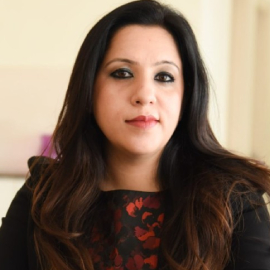Inner Child Healing
Healing Your Inner Child for Lasting Emotional Freedom
Inner child healing is a therapeutic process that helps you reconnect with your childhood's unresolved emotions and experiences. These wounds, whether caused by trauma, neglect, or emotional pain, often shape how we respond to challenges in adulthood. Inner child healing therapy by expert therapists works to identify these suppressed emotions and guide you through the process of healing and integrating them into your adult self. This therapeutic process can improve emotional balance, self-esteem, and healthier relationships.
During an inner child healing session, an expert therapist will guide you through techniques that focus on emotional release, inner child reconnection, and nurturing self-compassion. Whether you're dealing with childhood trauma, emotional neglect, or simply seeking a deeper understanding of your emotions, this therapy offers profound healing. By addressing the root of your emotional wounds, inner child healing therapy promotes long-term emotional well-being and the ability to live a fulfilling and authentic life.
Inner Child Healing and the Dimensions of Wellness: A Holistic Approach
Inner child healing therapy touches upon several dimensions of wellness, offering a comprehensive approach to emotional and psychological well-being. Below are the eight dimensions of wellness and how inner child healing integrates with each one.

Emotional Wellness
Inner child healing addresses unresolved childhood emotions, helping you process and heal them for emotional freedom.

Spiritual Wellness
You reconnect with your inner self through inner child therapy, fostering spiritual growth and alignment with your higher purpose.

Mental Wellness
By healing childhood wounds, you reduce mental clutter, allowing for improved clarity and mental focus in daily life.

Physical Wellness
Unhealed childhood wounds can manifest physically. Inner child healing helps reduce stress and tension that may impact physical health.

Social Wellness
Healing your inner child improves your capacity for connection, empathy, and healthier interpersonal relationships.

Occupational Wellness
Addressing childhood wounds through therapy helps remove unconscious blocks affecting your professional life, leading to more fulfilling career experiences.

Environmental Wellness
Inner child healing allows you to create healthier boundaries in your personal and professional environments, improving your overall well-being.

Financial Wellness
Healing childhood patterns of scarcity or fear can lead to healthier financial decisions and an abundant mindset.
The Benefits of Inner Child Healing Therapy
Inner child healing therapy provides deep emotional healing and fosters lasting personal growth. By reconnecting with and nurturing your inner child, you can overcome limiting beliefs and self-sabotaging behaviours that stem from childhood wounds. Here are the key benefits of this therapy:
- Releases repressed childhood trauma and emotional pain.
- Helps build healthier relationships by healing emotional wounds.
- Boosts self-esteem and nurtures self-compassion.
- Encourages personal growth through emotional healing and integration.
- Reduces anxiety and emotional triggers by addressing the root cause.
- Improves mental clarity and decision-making abilities.
- Facilitates emotional release, leading to stress reduction and physical health improvements.
- Enhances the ability to set boundaries and communicate effectively.
- Promotes spiritual awakening and self-awareness.
- Allows for emotional freedom and the capacity to live authentically.
Learn
Who is Inner Child Healing For?
Inner child healing therapy is beneficial for anyone who has experienced emotional trauma, neglect, or unresolved pain from childhood. This therapeutic approach can help adults and children reconnect with and heal the emotional wounds affecting their present lives. Whether you're dealing with anxiety, depression, relationship challenges, or a lack of self-worth, inner child healing can support your journey toward emotional freedom.
Who Can Benefit from Inner Child Healing Therapy?
- Adults dealing with unresolved childhood trauma.
- Individuals facing difficulties with emotional regulation and self-expression.
- People experiencing relationship struggles due to unhealed childhood wounds.
- Those suffering from low self-esteem or a lack of self-worth.
- Individuals who engage in self-sabotaging behaviours or limiting beliefs.
- People seeking to heal emotional neglect or abandonment issues from childhood.
- Adults facing repeated patterns of anxiety, depression, or anger.
- Individuals who desire to build healthier emotional boundaries.
- Those seeking spiritual awakening and personal growth.
- People ready to heal and integrate their inner child for a more fulfilling life.
Start your journey of
Start with a Free Session with Our Expert Therapists
Unlock the path to emotional freedom by starting with a free inner child healing session. Whether you work with an inner child healing therapist online or in person, our expert therapists will guide you through reconnecting with your inner child and addressing the emotional wounds that impact your life. During this session, you'll explore specific inner child therapy techniques tailored to your unique needs. Take the first step toward healing your inner child and achieving emotional balance by scheduling a free session today.
What Happens in an Inner Child Healing Session?
In an inner child healing session, your therapist will guide you through techniques designed to reconnect with and heal the unresolved emotions and wounds from your childhood. These sessions are tailored to your emotional needs and may involve techniques such as visualization, guided journaling, and emotional release exercises. The goal is to foster healing, self-compassion, and integration of your inner child into your present self.
What to Expect in an Inner Child Healing Session?
Identifying Childhood Wounds
The therapist will help you identify emotional wounds from your past that impact your present life.
Inner Child Visualization
You'll connect with your inner child through guided visualization, allowing for emotional release and healing.
Reparenting Exercises
You'll engage in exercises that involve "reparenting" your inner child by offering love, care, and support.
Journaling Your Inner Child's Story
Journaling allows you to explore your inner child's experiences, emotions, and needs, leading to deeper healing.
Emotional Release Techniques
Techniques like breathwork and guided emotional release exercises will help you process unresolved pain.
Self-Compassion and Nurturing
The therapist will guide you to foster self-compassion as you integrate your inner child into your adult self.
Identifying Triggers and Patterns
You'll learn to identify emotional response patterns and triggers stemming from your inner child wounds.
Ongoing Healing Techniques
The therapist will provide exercises and techniques to continue your inner child healing journey between sessions.
Solutions:
Inner Child Healing Solutions: Addressing Emotional Wounds for Lasting Healing
Inner child healing therapy focuses on resolving deep-rooted emotional wounds from childhood that often manifest in adulthood as anxiety, low self-esteem, or self-sabotaging behaviours. By healing these wounds, individuals can foster emotional balance, build healthier relationships, and live more authentically. Below are 20 common emotional pain points and their corresponding solutions through inner child healing therapy.
Inner Child Healing for Childhood Trauma
Resolves childhood trauma by processing repressed emotions and promoting healing.
Inner Child Healing for Abandonment Issues
Helps individuals overcome feelings of abandonment by nurturing their inner child with love and care.
Inner Child Healing for Low Self-Esteem
Builds self-worth by addressing childhood neglect or criticism, allowing the inner child to feel valued.
Inner Child Healing for Relationship Challenges
Resolves emotional wounds that impact relationships, fostering healthier connections.
Inner Child Healing for Anxiety and Fear
Identifies and heals childhood fears that contribute to adult anxiety, promoting inner peace.
Inner Child Healing for Trust Issues
Helps rebuild trust by healing childhood experiences of betrayal or abandonment.
Inner Child Healing for Perfectionism
Releases the inner child from the pressures of perfectionism imposed during childhood.
Inner Child Healing for Emotional Numbness
Reconnect individuals with their emotions, allowing them to feel and express feelings freely.
Inner Child Healing for Fear of Rejection
Heals the inner child's fear of rejection by fostering self-acceptance and self-love.
Inner Child Healing for Unresolved Anger
Identifies and releases repressed anger from childhood, promoting emotional balance.
Inner Child Healing for Depression
Addresses underlying childhood wounds contributing to depressive feelings, leading to emotional relief.
Inner Child Healing for Self-Sabotage
Breaks the cycle of self-sabotage by healing unconscious childhood beliefs that hinder growth.
Inner Child Healing for Fear of Success
Resolves fears of success by addressing childhood experiences of pressure or failure.
Inner Child Healing for Intimacy Issues
Heals past wounds that prevent emotional intimacy, allowing for deeper, healthier relationships.
Inner Child Healing for Inner Critic
Soothe the inner critic by fostering self-compassion and healing childhood wounds of criticism.
Inner Child Healing for People-Pleasing
Addresses the inner child's need for approval by promoting self-worth and setting healthy boundaries.
Inner Child Healing for Emotional Triggers
Identifies and heals emotional triggers stemming from childhood, fostering emotional regulation.
Inner Child Healing for Shame
Resolves deep-seated shame from childhood, allowing individuals to embrace self-worth.
Inner Child Healing for Fear of Abandonment
Heals fear of abandonment by offering emotional security and self-compassion to the inner child.
Inner Child Healing for Life Purpose Clarity
By healing childhood wounds, individuals can understand their life's purpose and embrace authenticity.

Coach VB
HypnotherapyA Master of the Mind's Alchemy

Coach SKB
TherapistDistinguished Healer & Coach

Coach RJ
AstrologerVedic Astrology & Vastu Expert

Psychologist Dr AS
Counseling PsychologistLearn
The Effectiveness of Inner Child Healing: Transform Your Emotional Landscape
Inner child healing is a highly effective therapeutic approach for individuals looking to resolve deep-rooted emotional wounds from childhood that influence their adult lives. Whether you are struggling with low self-esteem, trust issues, relationship challenges, or unresolved trauma, inner child healing therapy provides the tools and support needed to foster long-lasting emotional well-being. This therapy addresses the core emotional pain points from your past, allowing you to live more authentically and confidently.
Working with an inner child healing expert, you'll be guided through a transformative process of reconnecting with your inner child, identifying unresolved wounds, and nurturing emotional healing. The integration of inner child therapy techniques such as visualization, reparenting exercises, and emotional release work will allow you to process and heal the emotions stored in your unconscious mind. Over time, this therapy leads to improved self-worth, healthier relationships, and greater emotional resilience.
The long-term effectiveness of inner child healing lies in its ability to address the root causes of emotional distress. Rather than focusing solely on surface-level symptoms, inner child healing gets to the heart of your emotional pain, allowing for profound transformation. By healing your inner child, you open yourself to living a more fulfilling, balanced, and authentic life in which you embrace all parts of yourself with love and compassion.
Start your journey of
Tracing the Roots: The History of Inner Child Healing Therapy
The concept of inner child healing has deep roots in psychology and spirituality, with its origins traced back to early 20th-century psychoanalysis and later developments in humanistic and transpersonal psychology. Inner child healing became widely recognized as a therapeutic practice through the work of Carl Jung, who introduced the idea that each person has an "inner child", representing the part of their psyche that holds onto childhood experiences, emotions, and memories. Jung believed that the inner child is crucial to understanding and healing emotional wounds from the past.
In the 1970s, the human potential movement popularized inner child work to explore the unconscious mind and heal unresolved emotional pain. Therapists began to use techniques such as guided visualization, role-playing, and reparenting exercises to help individuals reconnect with their inner child and address the emotional scars left by childhood trauma. These therapeutic approaches allowed clients to confront repressed emotions and integrate them into their adult selves for healing and personal growth.
In recent decades, inner child healing has gained widespread acceptance as a powerful emotional and psychological healing method. Spiritual practices have also embraced the idea of inner child work, recognizing it as a means of fostering self-compassion, self-love, and spiritual awakening. Modern-day inner child healing therapists combine elements of psychology, spirituality, and mindfulness to guide clients on a journey of healing that encompasses both the mind and the spirit. This holistic approach ensures individuals achieve lasting emotional balance and more fulfilling lives.
Learn
FAQs
What is inner child healing?
How does inner child healing therapy work?
Who can benefit from inner child healing?
What happens during an inner child healing session?
What are some common types of inner child wounds?
What are the signs your inner child is healed?
What are inner child therapy techniques?
Can inner child therapy be done online?
What are the benefits of inner child healing?
What are inner child healing exercises?
How long does inner child healing take?
Can inner child healing help with anxiety?
What role does reparenting play in inner child healing?
What are some signs that your inner child needs healing?
Can inner child healing help with depression?
How does inner child healing improve relationships?
What is the difference between inner child healing and traditional therapy?
How does inner child healing help with self-sabotage?
Can inner child healing help with perfectionism?
What are inner child wounds?
How do inner child healing exercises work?
Can inner child healing help with trust issues?
What are some examples of inner child healing prompts?
Inner child healing prompts are reflective questions or journaling exercises that help individuals explore their childhood experiences and emotions. Some examples include:
- What did I need as a child that I didn't receive?
- How do my childhood experiences affect my relationships today?
- What memories trigger feelings of fear, sadness, or anger?
- How do I react when my inner child feels neglected or unheard?
- What would I tell my inner child to help them feel safe and loved?
How does inner child healing help with emotional triggers?
What are the signs of an unhealed inner child?
How do I know if my inner child is coming out?
How does inner child healing lead to self-love?
Can inner child healing be done without a therapist?
What are the benefits of guided visualization in inner child healing?
How does inner child healing impact mental health?
What are some common inner child healing techniques?
Common inner child healing techniques include:
- **Guided Visualization:** Imagining interactions with the inner child and offering them love and support.
- **Journaling:** Writing letters to the inner child or reflecting on childhood experiences and emotions.
- **Reparenting:** Providing the inner child with the care and support they needed during childhood.
- **Creative Expression:** Using art, music, or play to connect with and express the inner child's emotions.
- **Therapeutic Techniques:** Working with a therapist to explore and heal childhood wounds.


